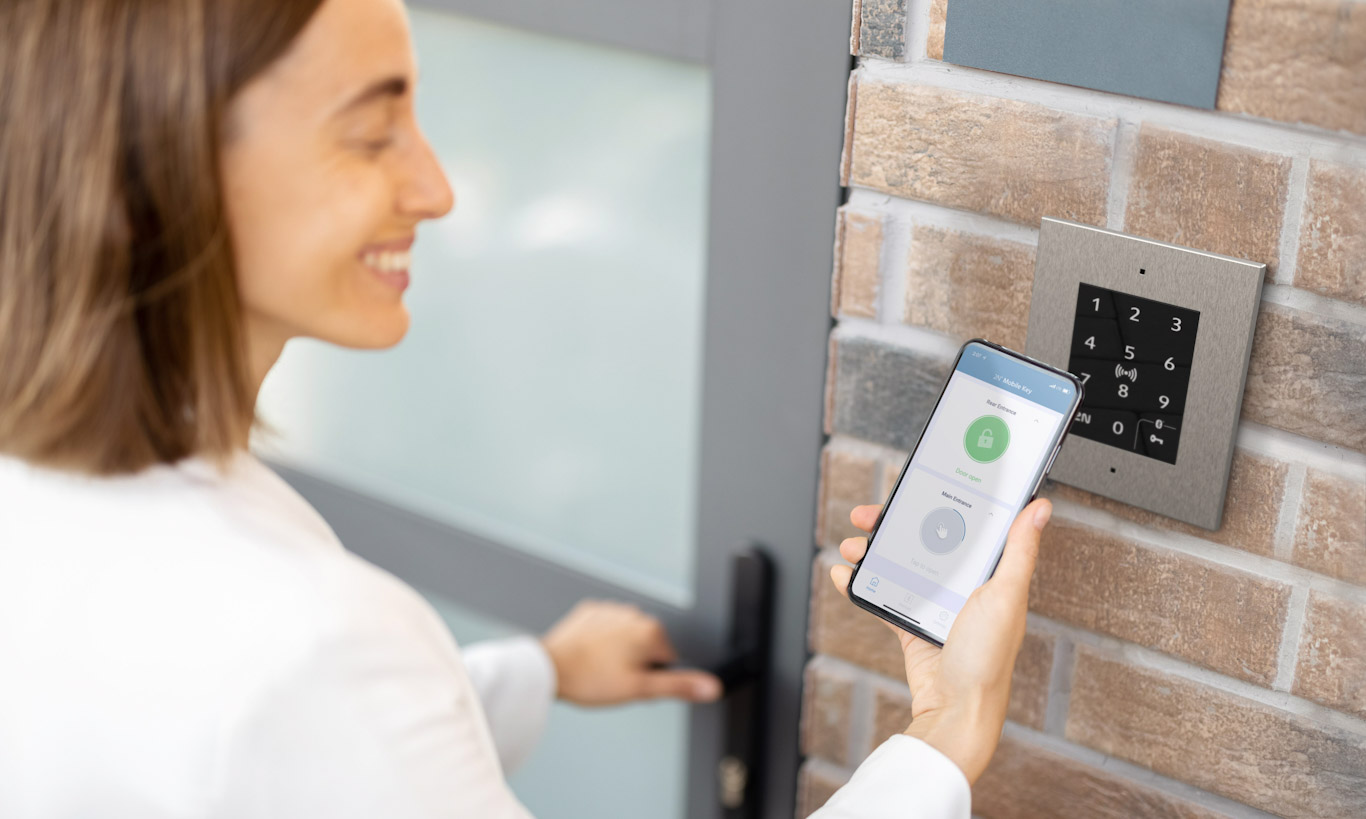2N, the global market leader in internet-enabled intercoms and access control systems, has launched a new access control reader, the 2N® Access Unit 2.0, which supports three access technologies – multi-frequency RFID cards, PIN via a touch keypad, and Bluetooth-based smartphone credentials – simultaneously. This offers the flexibility to provide different access control options for different users, depending on their needs or preferences.
For example, for entry into (and through) an office building, some employees may prefer fast, convenient access via their smartphone, whereas others may be more comfortable carrying an RFID card. PIN codes are likely to be the best option for occasional visitors such as cleaning staff. The unit can also allow for two-factor authentication – perhaps smartphone credentials followed by a PIN code – for buildings that require more security.
In residential buildings, the same flexibility is required: younger people often prefer mobile access – but with a PIN code as a backup option in case, for example, their phone runs out of battery. Elderly residents, on the other hand, sometimes favour a RFID card or PIN as the primary method for accessing their building.
As well as flexibility, the 2N® Access Unit 2.0 avoids wasting space and money by combining multiple devices and modules. This makes installation very straightforward and also streamlines the management of the site’s access control devices.
The 2N® Access Unit 2.0 is compatible with another newly-launched product, 2N® PICard. 2N® PICard lets administrators create a unique cryptographic keyset for every site and then use that keyset to encode new Protected Identity Credentials which are put on to RFID cards. 2N® PICard Commander is built on Mifare DESFire technology and combines a high level of security with a uniquely simple workflow.
Michael Nicholson, Business Development Manager for the UK & Ireland at 2N, said:
“The 2N® Access Unit 2.0 is a direct response to rapidly growing demand from our customers for more flexibility over their access control options. One of the central pillars of the current era in access control – which we at 2N call ‘Access Control 3.0’ – is multi-user technology, because projects have different needs and no two users are the same. Maximising usability therefore means maximising flexibility.”



